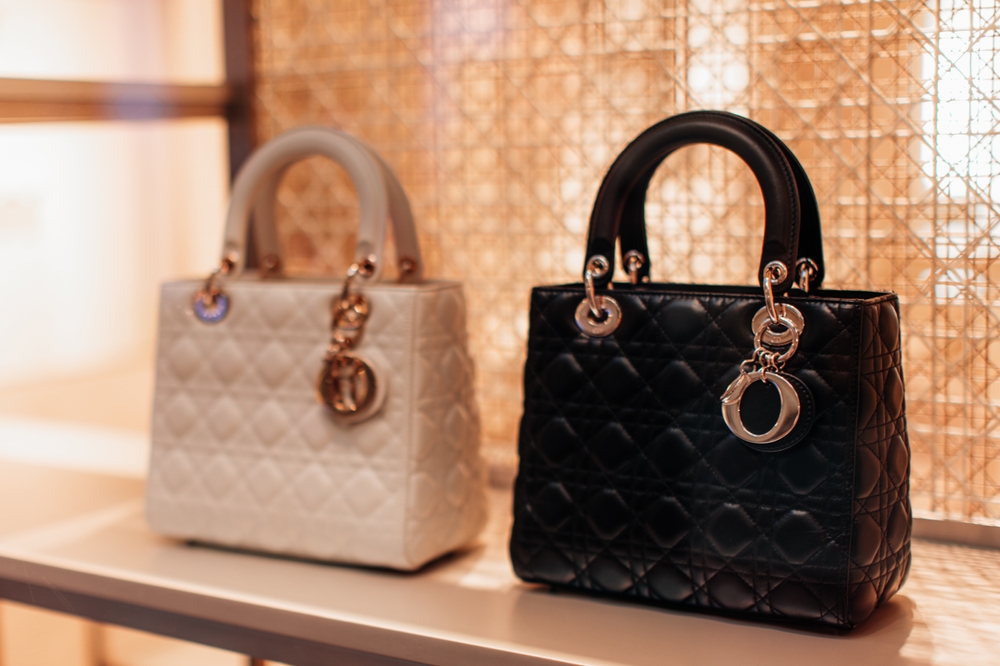The Formula to Get More Time Off Using Your Vacation Days
Piggybacking on public holidays to create longer breaks, taking off Mondays are among the tricks
It is barely past New Year’s Day. If you’ve taken the day off, congratulations: You have aced your first test of vacation-day math.
We get only so many days of paid time off a year. And that is if you’re lucky—one in five U.S. private-sector workers gets no PTO, according to the Bureau of Labor Statistics. Without a strategy, you can have a generous number of vacation days and still feel like you never truly got away from it all.
Think of the times you took a mini-break from work only to feel stressed before and afterward. The average American worker with five years at the company gets 15 paid days of vacation in a year, BLS data show. That leaves little room for bad planning if you want a serious break or two, plus some long weekends and the occasional personal day.
Maxim No. 1: A vacation day equals more than a day of vacation when you attach it to a public holiday or two. Taking the day after New Year’s this year snags you a four-day weekend at the start of 2024. Timed just right between federal holidays and weekends, 15 days of PTO can turn into nearly 50 days of extended break time this year. (That is, if your co-workers don’t beat you to claiming those dates.)
Another guiding principle—Fridays off are overrated, and not just because they are peak traveling days. For a long weekend or a random personal day, there is evidence to suggest a Monday and Wednesday can be more satisfying. But more on that later.
A weeklong vacation vs. long weekends
First, some science: To really recharge, you need at least one weeklong vacation, bracketed between two weekends, research suggests.
In one study of more than 50 people who took vacations for an average two weeks, participants’ well-being levels didn’t peak until their eighth day off. A 2023 study of more than 300 vacationers found people who took between eight and 14 days off reported greater and longer positive effects once they returned to work, such as better sleep, than those who took shorter breaks.
One to two weeks off, in fact, appeared to have longer-lasting benefits than lengthier vacations. After a while, “you creep back to old habits,” says Ty Ferguson, a research associate at the University of South Australia in Adelaide who co-wrote the study. His own recent getaway—several days down the coast—went bust when his three children, ages five and under, came down with a bug. Then it was time to return.
“I should take more of my own advice,” he says.
One reason taking a week-plus vacation is important is that is enough time to actually reduce workloads. Network-equipment giant Cisco recently conducted a deep data dive on employees’ work habits and well-being, examining more than three years’ of metrics such as virtual meetings, badge-ins, PTO and engagement surveys. When workers took a day or two off, the number of meetings they had in the month didn’t change much—they just packed in more work before and after their time off.
Meeting loads dropped sharply for workers who took at least five consecutive days off. The fewer the meetings, the greater tendency to report healthier routines and better stress-coping abilities, Cisco found.
“I always believed in the long weekend because it can be so hard to take a week off,” says Cisco’s chief people officer, Kelly Jones. “I was wrong.”
Maximising public holidays
To get the most out of your finite days off, consider Gail Martino’s PTO hack for 2024. “I’m a leisure laggard,” says the senior project manager in New Haven, Conn., of her habit of waiting to take vacation time until things get slower. (Hint: That is never.) Then there is a scramble to use it or lose it toward the end of the year, with the days she does take off feeling not terribly satisfying.
“You wonder, why am I so tired?” she says.
In recent years, she’s become a bird watcher and wants to take a couple of birding trips along the Eastern Seaboard in 2024. “I spend a week in the woods, among trees and nature, and that is an incredible break,” she says. “Now I want to chart out the entire year.”
Scanning the 2024 calendar, she devised a spreadsheet of dates bridging public holidays and weekends with a theoretical 15 vacation days and four personal days. (Working at Unilever for 18 years, she got about a week more PTO than that in 2023.) The result was 50 days of extended breaks, including 9-day stretches in July and over Christmas:
A little tweaking can wring nearly the same number of extended break days with just 15 vacation days and no personal days—that is, if you get a full slate of federal holidays off and don’t have to trade off with co-workers:
The case for Mondays and Wednesdays off
Want to take a three-day weekend that isn’t attached to a federal holiday? Take Monday off instead of Friday, suggests Jim Burch, a 38-year-old software engineer in Phoenix and an avid hiker. Taking Fridays off often results in cramming five days of work into four, he points out.
“I’d get so stressed out on the Thursday before,” says Burch, who at his current job, has more autonomy over his schedule than in earlier jobs.
Delaying gratification until Monday means your co-workers have no choice but to start the workweek without you. Back Tuesday, you can quickly catch up on whatever emails or developments you missed, he says.
Then there is the unexpected pleasure of a Wednesday off. “It is like a midweek weekend,” says Rachel Blenkhorn, a social-media production manager for a real-estate investment trust who lives in Warren, Mich. It is long enough to relax or take care of appointments yet short enough to get back in the work groove on Thursday, she says.
There is science as to why, says Dawna Ballard, a professor at the University of Texas at Austin and an expert in chronemics, the study of time as it relates to communication.
“Everyone has a different chronotype,” or their own biologically driven pace, she says. A break after two days’ work gives you a second chance in the week to return to your internal rhythm. Psychologically, it also creates a bit of “slack” in the workweek, alleviating the stress that comes from feeling like there is too little time to get everything done.
However you plot your vacation days in 2024, don’t leave any on the table. They aren’t just good for you, there is evidence they are good for your career.
An Ernst & Young study of its employees showed every extra 10 hours of vacation was linked to an 8% improvement in year-end performance reviews. Another study found people who took more than 10 vacation days a year were more likely to get a raise or bonus than those who took fewer days.
Now that is a formula anyone can get behind.
 Copyright 2020, Dow Jones & Company, Inc. All Rights Reserved Worldwide. LEARN MORE
Copyright 2020, Dow Jones & Company, Inc. All Rights Reserved Worldwide. LEARN MORE
This stylish family home combines a classic palette and finishes with a flexible floorplan
Just 55 minutes from Sydney, make this your creative getaway located in the majestic Hawkesbury region.
As Paris makes its final preparations for the Olympic games, its residents are busy with their own—packing their suitcases, confirming their reservations, and getting out of town.
Worried about the hordes of crowds and overall chaos the Olympics could bring, Parisians are fleeing the city in droves and inundating resort cities around the country. Hotels and holiday rentals in some of France’s most popular vacation destinations—from the French Riviera in the south to the beaches of Normandy in the north—say they are expecting massive crowds this year in advance of the Olympics. The games will run from July 26-Aug. 1.
“It’s already a major holiday season for us, and beyond that, we have the Olympics,” says Stéphane Personeni, general manager of the Lily of the Valley hotel in Saint Tropez. “People began booking early this year.”
Personeni’s hotel typically has no issues filling its rooms each summer—by May of each year, the luxury hotel typically finds itself completely booked out for the months of July and August. But this year, the 53-room hotel began filling up for summer reservations in February.
“We told our regular guests that everything—hotels, apartments, villas—are going to be hard to find this summer,” Personeni says. His neighbours around Saint Tropez say they’re similarly booked up.
As of March, the online marketplace Gens de Confiance (“Trusted People”), saw a 50% increase in reservations from Parisians seeking vacation rentals outside the capital during the Olympics.
Already, August is a popular vacation time for the French. With a minimum of five weeks of vacation mandated by law, many decide to take the entire month off, renting out villas in beachside destinations for longer periods.
But beyond the typical August travel, the Olympics are having a real impact, says Bertille Marchal, a spokesperson for Gens de Confiance.
“We’ve seen nearly three times more reservations for the dates of the Olympics than the following two weeks,” Marchal says. “The increase is definitely linked to the Olympic Games.”

Getty Images
According to the site, the most sought-out vacation destinations are Morbihan and Loire-Atlantique, a seaside region in the northwest; le Var, a coastal area within the southeast of France along the Côte d’Azur; and the island of Corsica in the Mediterranean.
Meanwhile, the Olympics haven’t necessarily been a boon to foreign tourism in the country. Many tourists who might have otherwise come to France are avoiding it this year in favour of other European capitals. In Paris, demand for stays at high-end hotels has collapsed, with bookings down 50% in July compared to last year, according to UMIH Prestige, which represents hotels charging at least €800 ($865) a night for rooms.
Earlier this year, high-end restaurants and concierges said the Olympics might even be an opportunity to score a hard-get-seat at the city’s fine dining.
In the Occitanie region in southwest France, the overall number of reservations this summer hasn’t changed much from last year, says Vincent Gare, president of the regional tourism committee there.
“But looking further at the numbers, we do see an increase in the clientele coming from the Paris region,” Gare told Le Figaro, noting that the increase in reservations has fallen directly on the dates of the Olympic games.
Michel Barré, a retiree living in Paris’s Le Marais neighbourhood, is one of those opting for the beach rather than the opening ceremony. In January, he booked a stay in Normandy for two weeks.
“Even though it’s a major European capital, Paris is still a small city—it’s a massive effort to host all of these events,” Barré says. “The Olympics are going to be a mess.”
More than anything, he just wants some calm after an event-filled summer in Paris, which just before the Olympics experienced the drama of a snap election called by Macron.
“It’s been a hectic summer here,” he says.

AFP via Getty Images
Parisians—Barré included—feel that the city, by over-catering to its tourists, is driving out many residents.
Parts of the Seine—usually one of the most popular summertime hangout spots —have been closed off for weeks as the city installs bleachers and Olympics signage. In certain neighbourhoods, residents will need to scan a QR code with police to access their own apartments. And from the Olympics to Sept. 8, Paris is nearly doubling the price of transit tickets from €2.15 to €4 per ride.
The city’s clear willingness to capitalise on its tourists has motivated some residents to do the same. In March, the number of active Airbnb listings in Paris reached an all-time high as hosts rushed to list their apartments. Listings grew 40% from the same time last year, according to the company.
With their regular clients taking off, Parisian restaurants and merchants are complaining that business is down.
“Are there any Parisians left in Paris?” Alaine Fontaine, president of the restaurant industry association, told the radio station Franceinfo on Sunday. “For the last three weeks, there haven’t been any here.”
Still, for all the talk of those leaving, there are plenty who have decided to stick around.
Jay Swanson, an American expat and YouTuber, can’t imagine leaving during the Olympics—he secured his tickets to see ping pong and volleyball last year. He’s also less concerned about the crowds and road closures than others, having just put together a series of videos explaining how to navigate Paris during the games.
“It’s been 100 years since the Games came to Paris; when else will we get a chance to host the world like this?” Swanson says. “So many Parisians are leaving and tourism is down, so not only will it be quiet but the only people left will be here for a party.”
This stylish family home combines a classic palette and finishes with a flexible floorplan
Just 55 minutes from Sydney, make this your creative getaway located in the majestic Hawkesbury region.






















